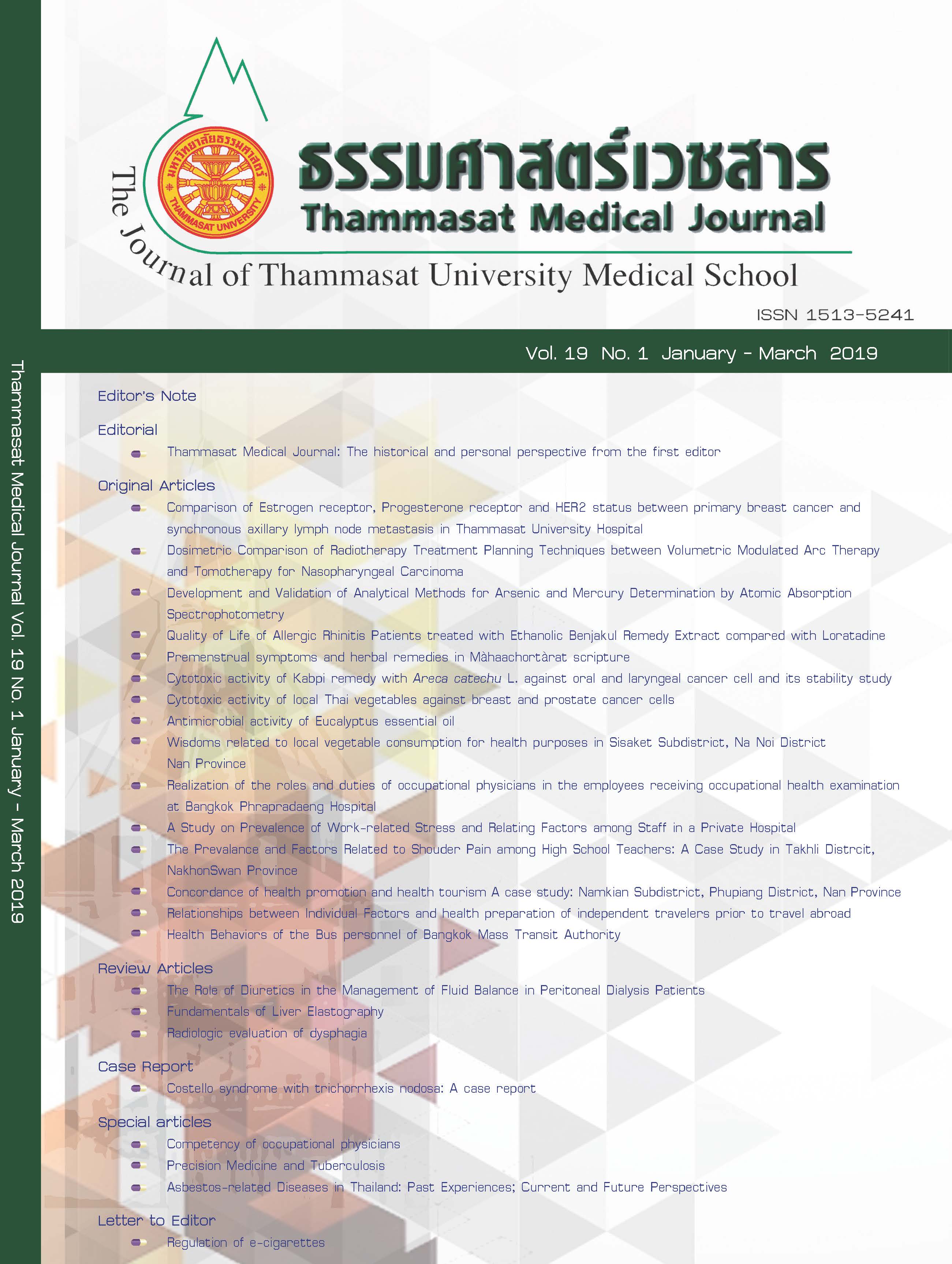Development and Validation of Analytical Methods for Arsenic and Mercury Determination by Atomic Absorption Spectrophotometry
Keywords:
Arsenic, Mercury, Atomic absorption spectrometerAbstract
Introduction: Arsenic (As) and mercury (Hg) are contaminants in soil and water. Crops in or close to contaminated sites can uptake and accumulate these metals and then exert potential risk to humans. This research aimed to develop and validate the analytical methods for As and Hg.
Methods: The As was determined by graphite furnace atomic absorption spectrophotometry (GFAAS), and Hg was determined by an in-house developed cold vapor atomic absorption spectrophotometry (CVAAS) method. The bottled water, rice, ginger and whitening cream as samples were prepared by wet digestion. Validation was performed according to the International Committee on Harmonization (ICH) Guidelines.
Results: The proposed method permitted the determination of As and Hg in the ranges of 2.5 - 75 micrograms per liter and 0.25 - 5.0 micrograms per liter, respectively, with correlation coefficients greater than 0.995. The limits of detection (LOD) were found to be 0.978 micrograms per liter and 0.068 micrograms per liter for As and Hg, respectively, while the limits of quantitation (LOQ) were found to be 3.26 micrograms per liter and 0.23 micrograms per liter for As and Hg, respectively. Mean percentage recoveries were in the range of 80 - 110 while percentage relative standard deviations (%RSD) were slightly more than 7 for As and less than 11 for Hg. The Hg results of all samples were consistent with analysis by an inductively coupled plasma mass spectrometer (ICP-MS).
Conclusion: The As method was not suitable for trace amounts of As in samples (less than 20 micrograms per liter) and need more development. The Hg method was successfully applied to the study of Hg contamination in food, herbal medicines and cosmetics.


